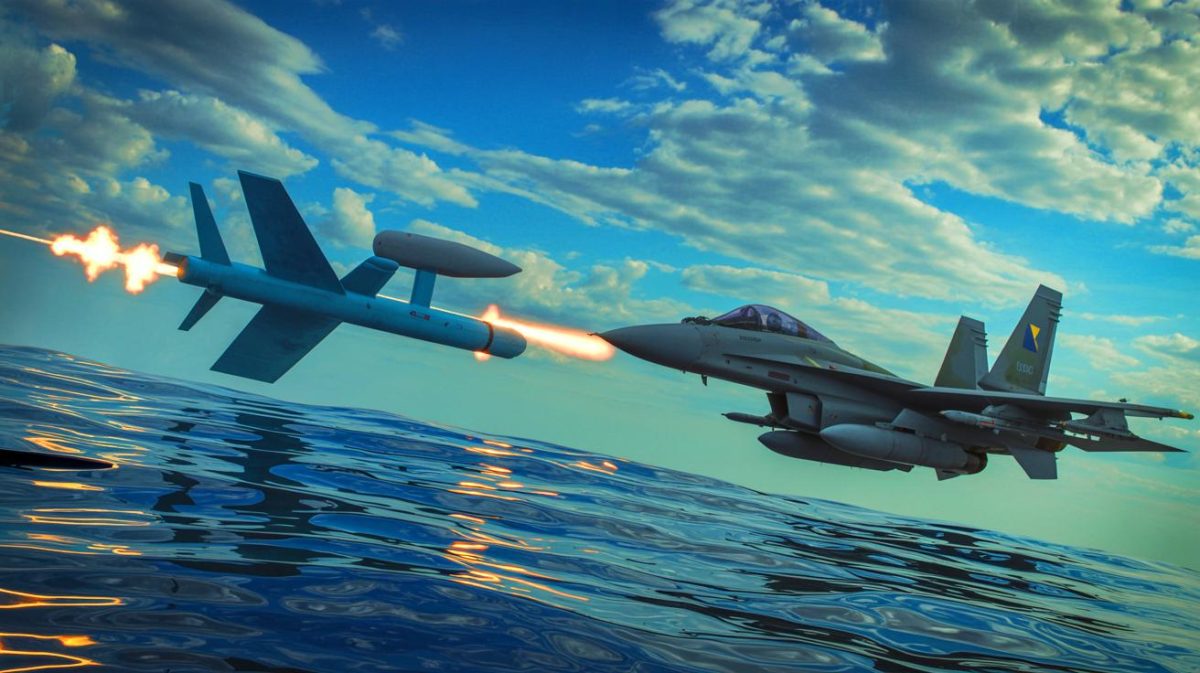| IN A NUTSHELL |
|
The recent downing of a Russian fighter jet by a Ukrainian sea drone marks a significant milestone in modern warfare, showcasing the evolving capabilities of unmanned systems in combat scenarios. This unprecedented event took place over the waters near Novorossiysk, underscoring the strategic use of drones in active conflict zones. As the first recorded instance of a naval drone successfully targeting a combat aircraft, it highlights the shifting dynamics of military engagements and the growing importance of drone technology in national defense strategies.
Combat Aircraft Shot by a Sea Drone
The operation that led to the downing of the Russian Su-30 fighter jet was a coordinated effort involving Ukraine’s Security Service (SBU) and its defense forces. This tactical strike utilized the Magura V5 drone, a sophisticated unmanned surface vessel (USV) capable of executing a variety of military operations. The incident was not isolated; in December 2024, the same model drone had successfully shot down two Russian Mi-8 helicopters, demonstrating its effectiveness and versatility.
On May 3, footage of this historic event was shared on Telegram by Ukraine’s GUR, highlighting the strategic acumen of Ukraine’s Group 13, a special unit within HUR, in collaboration with the SBU. The Su-30, valued at approximately $50 million, was targeted near the port of Novorossiysk—a hub for Russia’s Black Sea Fleet. This incident underscores the potential of naval drones to disrupt traditional air superiority dynamics and suggests a shift in how military operations may be conducted.
R-73 Surface-to-Air Missile Was Used
The R-73 surface-to-air missile, known for its precision, was deployed by the Magura sea drone to execute this operation. These drones, a product of Ukraine’s defense industry, are capable of a wide range of missions, from combat to reconnaissance and search and rescue operations. This incident has yet to be publicly acknowledged by the Kremlin, though reports from sources close to the Russian Defense Ministry have confirmed its occurrence.
The blogger Rybar, writing on Telegram, noted the attack’s specifics: an Su-30 fighter jet downed 31 miles west of Novorossiysk by an unmanned vessel equipped with the R-73 SAM. The pilots survived, thanks to quick rescue efforts by civilian sailors, but the loss of the aircraft signifies a new era in naval warfare. The effectiveness of these drones in taking down jets, traditionally considered formidable adversaries, marks a strategic advantage that could reshape future military engagements.
Implications for Future Warfare
The introduction of naval drones like the Magura into warfare represents a new frontier in military strategy, particularly for countries with limited traditional military resources. The incident suggests that even advanced fighter jets are vulnerable to these agile and cost-effective unmanned systems. Russia’s reliance on Flankers to counter Ukrainian USVs (unmanned surface vehicles) highlights a growing challenge as these drones become more prevalent.
As drones continue to evolve, they offer a strategic advantage by providing a low-cost alternative to traditional military hardware, allowing nations to project power and secure territorial integrity with minimal risk to personnel. The adaptability and stealth of USVs make them difficult targets for conventional anti-ship weapons, posing a significant challenge to adversaries and necessitating new defensive strategies.
The Global Impact of Drone Technology in Military Operations
As this incident illustrates, the rise of drone technology in military operations is reshaping the global defense landscape. Nations around the world are investing in drone technology to bolster their military capabilities, recognizing the strategic advantages these systems provide. The ability of USVs to conduct precise and effective operations with minimal human intervention is a game-changer in modern warfare.
This shift prompts a reevaluation of existing military doctrines and highlights the need for enhanced counter-drone strategies. As other nations observe the success of Ukraine’s drone operations, there will likely be increased interest in developing similar capabilities. This technological evolution presents both opportunities and challenges, as countries must adapt to new threats while harnessing the potential of unmanned systems for national defense.
The successful deployment of a sea drone to down a combat aircraft heralds a new era in military strategy, where unmanned systems play a critical role in achieving tactical objectives. As nations continue to innovate and adapt to these advancements, how will traditional military power structures evolve to meet the challenges posed by this emerging technology?
Did you like it? 4.5/5 (24)








Wow, a sea drone taking down a fighter jet? That’s some next-level tech! 😮
Est-ce que la Russie va riposter avec ses propres drones en mer ?
C’est incroyable de voir jusqu’où la technologie des drones a progressé. Merci pour l’article !
Je me demande si d’autres pays vont suivre l’exemple de l’Ukraine maintenant.
Les drones de mer, c’est l’avenir des batailles navales ou juste un coup de chance ? 🤔
La technologie devient vraiment effrayante… Un drone qui abat un avion de chasse ?!